DJI Osmo Mobile 3 vs Zhiyun Smooth Q2
In this video I’m going to look at the DJI Osmo Mobile 3 and the Zhiyun Smooth Q2. They’re both popular, small and portable 3 axis gimbals. My feeling is that the Zhiyun is going to come out on top, but let’s see how they do.
Oscar winning Steven Soderbergh shot a feature film with his iPhone and a DJI Osmo gimbal and it’s on Netflix. So is the Osmo Mobile 3 as good, or even better?
I’ve used the original Zhiyun Smooth Q to shoot a SciFi series which is now on Amazon Prime. Was I right to switch to the latest Smooth Q? Is it an upgrade or a downgrade? Maybe it’s a “sidegrade”.
Let’s find out…
Should We Judge a Gimbal by its Cover?
Just opening the box, the Zhiyun looks and feels more solid. My immediate feeling is that the Smooth Q2 is a more serious device. When you hold it in your hand, it feels much more solid. You can feel it’s made of metal, whereas the Osmo Mobile 3 is plastic.
Having said that, the DJI sits more comfortably in your hand as it has more of a pistol grip shape, whereas the Smooth Q2 has a basic cylinder. Also, the Smooth Q2 handle is slightly smaller, so for me it feels like it’s not quite big enough.
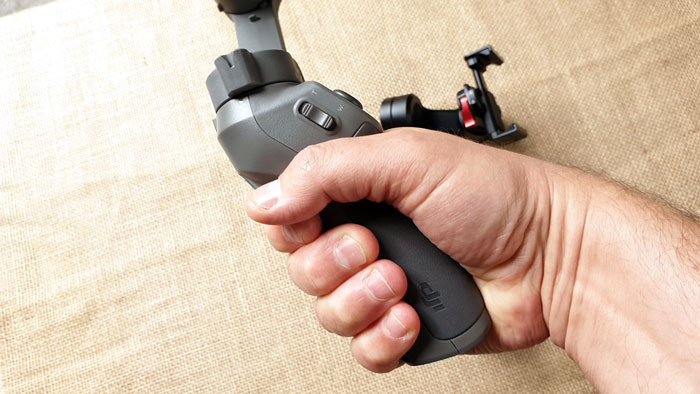
This gimbal might be more suited to smaller hands. Like the Osmo Mobile 3, the Smooth Q2 can be bought with the mini tripod, which doubles up as an optional gimbal handle extension. So adding that solves the gimbal handle size problem, to a degree.
Setting up
I really like a piece of kit if it’s easy to get started and you don’t have to spend hours of your life hunting the internet for answers to problems you’re having. So I was curious to find out which of these gimbals gives you an easier ride. Which one will walk us through the basics better so we can start being creative quicker?
The DJI Osmo Mobile 3 somehow seemed a little bit clearer. The DJI Mimo app certainly takes you through the set up, step by step. Whereas the Zhiyun play app leaves you to work things out for yourself, a little bit.
Mounting
Both gimbals are easy when it comes to mounting your device. It’s pretty easy to get your phone in and out of the clamp.
The Smooth Q2 also has a quick release system which is supposed to make it quicker to grab your phone should you need to. Although, to be honest, I think it’s quicker just to remove your phone from the clamp than to use the quick release.
That said, the quick release should mean you can remove and replace your phone without having to rebalance it.
Balancing
Neither have a side clamp, which means to balance your smartphone you simply slide it left and right until it’s about level. I found this to be easier with the DJI compared to the Zhiyun.
On the other hand, the Smooth Q2 grip is more adaptable to larger devices and the teeth of the grip are big enough to accommodate your phone inside a case. With the DJI the teeth are a bit narrower.
Although the Smooth Q2 is slightly harder to balance, the gimbal has more powerful motors, so it feels like you can be more approximate.
Size
Both gimbals have been shrunk down. DJI has gone for a folding system, while Zhiyun claims theirs can fit into your pocket without folding.
I tested it in my jean’s pocket and found the design of the Osmo Mobile 3 makes it slip easier into your pocket. Having said that, I’m not sure I would feel too comfortable with either of these gimbals in my pocket, even if I could squeeze one in. That would surely start to chaff after a few minutes.
Anyway, the point being these gimbals are a lot smaller than their previous models. Certainly, they would slip easier into a bag or backpack. In which case there’s not too much advantage to the Zhiyun, size-wise.
Weight
The DJI gimbal weighs 405 grams (which is just over 14 ounces). Meanwhile the Zhiyun weighs 430 grams – so just a little more.
Max Payload
The maximum weight a gimbal can carry isn’t a line you should never cross. However, it is a good indication of the strength of the motors. And stronger motors mean the gimbal can handle heavier phones with case and lens attached with less wear on the motors.
- DJI Osmo Mobile 3: 200 +/-30 grams
- Zhiyun Smooth Q2: 260 grams
Zhiyun wins with the stronger motors of the two. Interestingly, DJI have been more ambiguous going with a “give or take” 30 grams. So the Mobile 3 maximum weight is between 170 and 230 grams.
Battery Power
Personally, I’ve never had a gimbal run out of power on me. I don’t tend to spend the whole day using one and they’re easy to quickly recharge. But is there a dramatic difference between the DJI and Zhiyun rivals?
No.
- DJI Osmo Mobile 3: 15 hours
- Zhiyun Smooth Q2: 17 hours
Hardly any difference, however the Zhiyun just edges it there.
With lenses?
So what about adding lenses, filters or maybe even a microphone to your setup? How will the motors of these gimbals deal with the extra weight?
I tested both gimbals, first with a Neewer Variable ND filter and clip and then with a Moondog Labs anamorphic and clip. Both of the gimbals were able to handle the weight. However, the Zhiyun suddenly spun around and fell over when I tried to add anything while it was switched on. On the other hand, the DJI remained steady throughout the test.
Portrait to Landscape
Both these gimbals are heavily aimed at smartphone filmmakers on the move. Vlogging, social media content and travel videos being the main focus. So switching easily between portrait and landscape can be pretty useful. How do they compare?
The DJI actually switches really easily. Just a couple of taps. But to switch using the Smooth Q2, you have to do an awkward movement and then hold it at a less than comfortable angle.
Gimbal in Shot
One major issue with using a smartphone gimbal has been the front appearing in shot when using a wide angle lens. And this is one area where DJIs get an advantage. The Osmo Pocket 3 has been designed with the motor close to the phone out of shot.
On the other hand, the Smooth Q2 has the old design with the motor a few cm in front, which means it will get into shots when using added or inbuilt wide lenses.
One solution is to hold the gimbal handle at an angle so the front motor drops down out of shot. But that’s a bit of a restriction to the operation of the gimbal. So it’s not the perfect solution.
Zhiyun Firmaware UPDATE:
App Features
While the DJI app has a feature called Active Track, the Zhiyun has the same feature but it’s called Smart Follow. However, the Zhiyun Smooth Q2 does not have the gesture control that the DJI Mimo app has.
Gesture mode allows you to take a picture or start a video recording just by making a sign with your hand. Plus, in the DJI app the gesture control and active track combine for a quite a powerful feature.
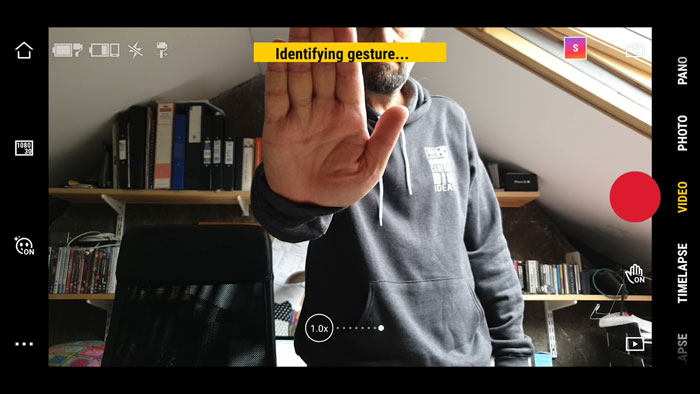
This is something I found quite useful if you are trying to record yourself. You can simply make a gesture and the app locks on and starts tracking you. With the Smooth Q2, you have to use the selfie camera, which is most likely not your phone’s best quality camera.
It’s not recording…
This is just a detail but a little unfortunate – the Zhiyun camera app uses the word “recording” when in video mode. At first, I thought I’d hit the record button accidentally and it was recording. Like I say, just a small thing but using the word “record” there would save confusion.
Manual Mode
One major plus for the Zhiyun Play app: it has a manual mode which gives you some control over settings. You can set and lock ISO, shutter speed, white balance, focus and zoom. However, note this is a separate mode to the mode which allows tracking – so you can’t have both.
Both DJI and Zhiyun apps allow you to set resolution and frame rate.
Story Mode
The DJI Mimo app also has story mode, which I at first thought was going to be a bit of a gimmick. But once I started using it, I really had fun with it. As I said in my tutorial on the DJI Osmo Mobile 3, this could also be a great tool for learning filmmaking.
The plus side for the Zhiyun app is the amount of fine adjusting you can do, if you want to dive into the settings. So if you’re someone who likes tweaking and adjusting settings, and generally customising things, then the Q2 could be more to your liking than the Mobile 3.
Low Angles
The DJI Osmo Mobile 3’s design is flatter due to placing the motor to the side to keep it out of shot. Now, this is great for us wide angle and anamorphic lens users. But when you come to swing the gimbal down for a low shot, this becomes a little trickier with the DJI.
Instead of simply tilting down, you have to kind of swing down and twist to the side. So that’s not as smooth but you can get used to it with some practice.
Other features
The Zhiyun has a quick release system to save you from having to rebalance each time, which sounds cool. But it turns out in practice it’s probably just as quick to unmount your phone.
Both smartphone gimbals come with add-on mini-tripod legs at an extra cost. Difference is, the Zhiyun can stand up without legs whereas the DJI can’t.
Both gimbals come with a few extra features too. The Zhiyun has the now standard vortex mode for example. For me these things are minor details and not game changers. Comparing the 2, the DJI appears to have more gimbal control features.
In Conclusion
I’ve been using my original Zhiyun Smooth Q for 2 years and I’ve had great experiences. And on the surface, the Smooth Q2 looked like it was going to be the more pro of these 2 gimbals.
However, at least in the experience I’ve had so far, the DJI is easier to set up and get started and generally more reliable. I find it generally easier to use, more intuitive and more fun somehow. Plus, it also doesn’t have the issue with the gimbal motor appearing in the shot.
Things like active track just work better and there’s the added bonus of gesture control and story mode. I think you would get tired story mode, but as a feature to get you started shooting little sequences, I think it’s pretty cool.
Find the DJI Osmo Mobile 3 on Amazon.
Find the Zhiyun Smooth Q2 on Amazon.
Don’t miss out on any smartphone filmmaking news!
Eager to learn more?
Join our weekly newsletter featuring inspiring stories, no-budget filmmaking tips and comprehensive equipment reviews to help you turn your film projects into reality!
Simon Horrocks
Simon Horrocks is a screenwriter & filmmaker. His debut feature THIRD CONTACT was shot on a consumer camcorder and premiered at the BFI IMAX in 2013. His shot-on-smartphones sci-fi series SILENT EYE featured on Amazon Prime. He now runs a popular Patreon page which offers online courses for beginners, customised tips and more: www.patreon.com/SilentEye


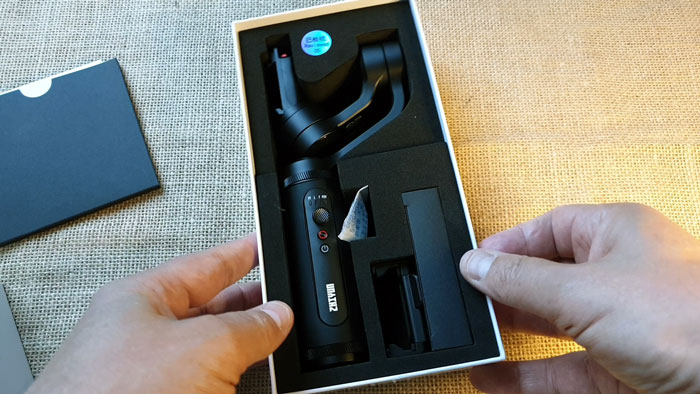
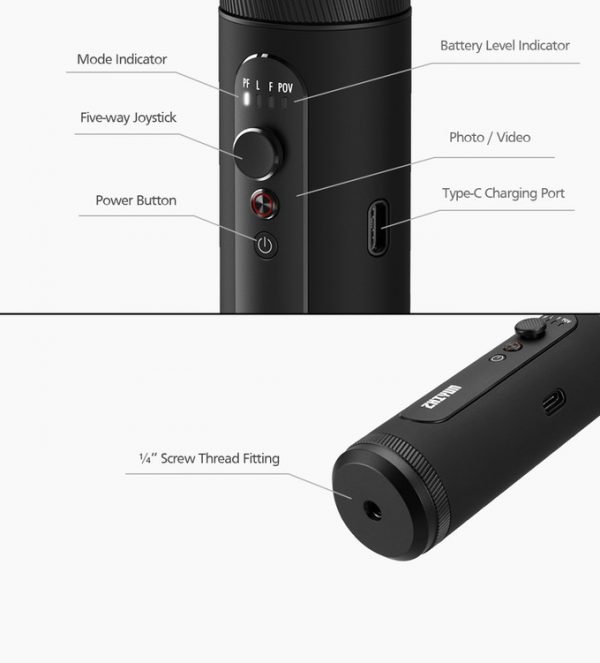
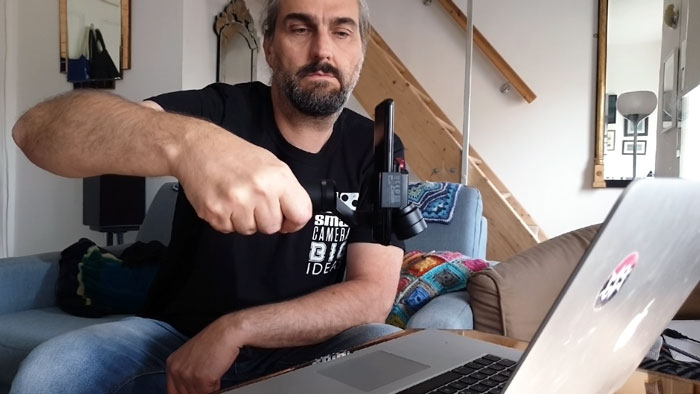
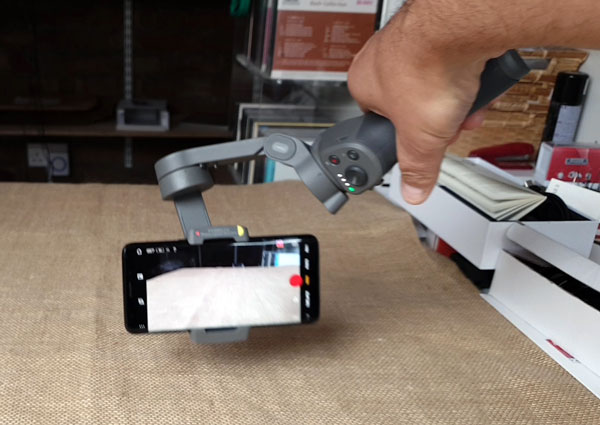
Leider gibt bei den Vorstellungen der Gimbals niemand an, ob sie mit den aktuellen Smartphones kompatibel sind. Mich persönlich interessiert, ob Zhiyun Q 2 und das Huawei Mate 20 pro kompatibel sind und ob ein Test möglich ist oder bereits vorliegt.